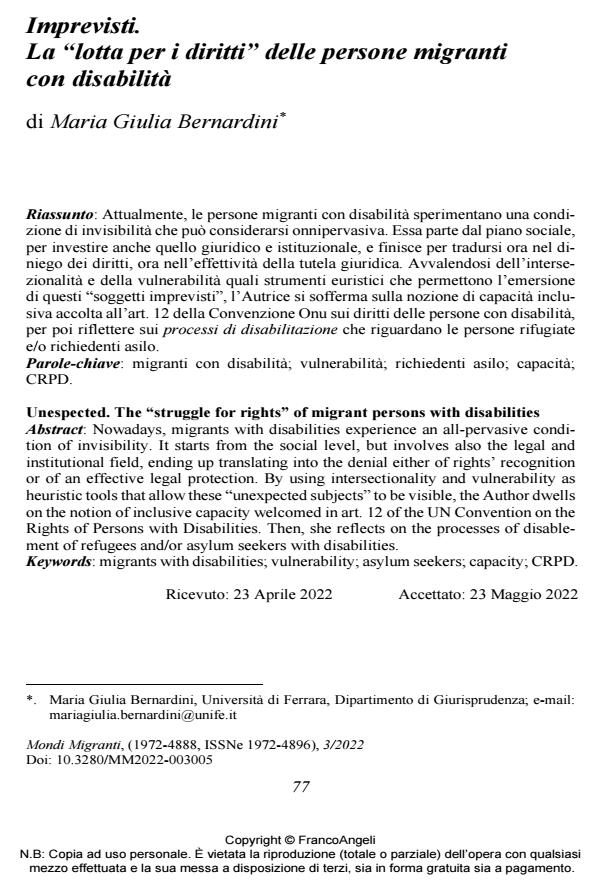Unespected. The "struggle for rights" of migrant persons with disabilities
Journal title MONDI MIGRANTI
Author/s Maria Giulia Bernardini
Publishing Year 2022 Issue 2022/3
Language Italian Pages 13 P. 77-89 File size 160 KB
DOI 10.3280/MM2022-003005
DOI is like a bar code for intellectual property: to have more infomation
click here
Below, you can see the article first page
If you want to buy this article in PDF format, you can do it, following the instructions to buy download credits

FrancoAngeli is member of Publishers International Linking Association, Inc (PILA), a not-for-profit association which run the CrossRef service enabling links to and from online scholarly content.
Nowadays, migrants with disabilities experience an all-pervasive condition of in-visibility. It starts from the social level, but involves also the legal and institutional field, ending up translating into the denial either of rights’ recognition or of an ef-fective legal protection. By using intersectionality and vulnerability as heuristic tools that allow these "unexpected subjects" to be visible, the Author dwells on the notion of inclusive capacity welcomed in art. 12 of the UN Convention on the Rights of Persons with Disabilities. Then, she reflects on the processes of disable-ment of refugees and/or asylum seekers with disabilities.
Keywords: migrants with disabilities; vulnerability; asylum seekers; capacity; CRPD
Maria Giulia Bernardini, Imprevisti. La "lotta per i diritti" delle persone migranti con disabilità in "MONDI MIGRANTI" 3/2022, pp 77-89, DOI: 10.3280/MM2022-003005